Which Roses Do Bees Like?
Around the sandy coast where I live, there are many wild rose shrubs
growing around the dunes, as well as naturalised Beach Roses (Rosa
rugosa). Bees are very active visiting
both. Wild roses and Rosa rugosa have lovely open
flowers, and fewer petals than some of the heavily cultivated varieties.
Indeed, as a general rule of thumb, if you want to select roses that will attract bees, it's best to go for the older, traditional types, with more open flowers, fewer petals - and often they will have a lovely scent.
Why are bees attracted to these roses?
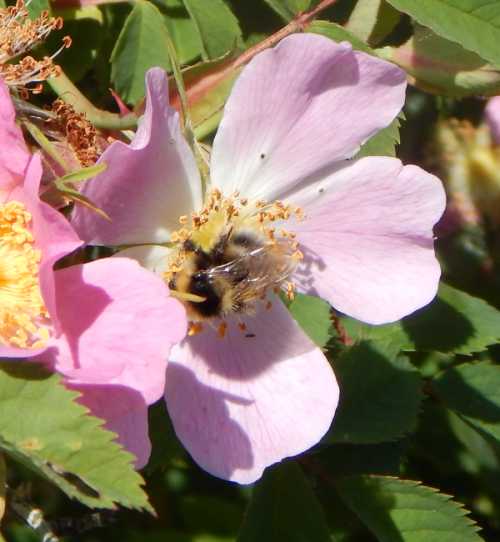 Which roses do bees like?
Which roses do bees like? Above: A lovely bumble bee foraging on wild rose - Rosa acicularis
Bees visit the roses especially to collect the
pollen. The buzzing of bumble bees can be
quite loud as they typically grab hold of the anthers and vibrate their thorax against them to release the
pollen.
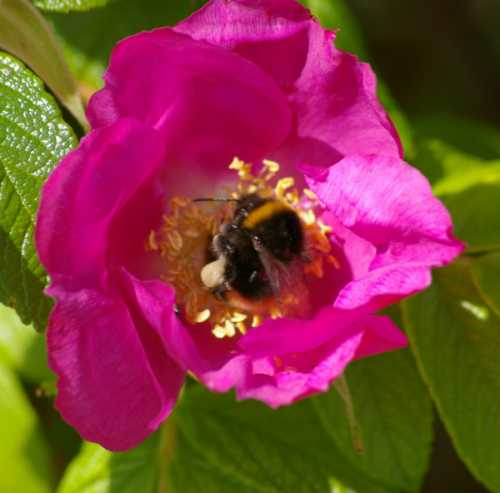 Above: A bumble bee grabbing hold of Rosa rugosa anthers.
Above: A bumble bee grabbing hold of Rosa rugosa anthers.Honey bees and other bee species are also keen to gather pollen from the bountiful anthers of wild roses and Rosa rugosa.
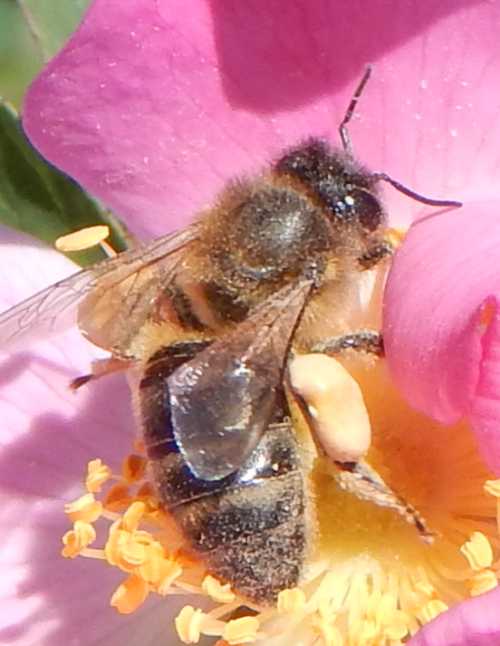 Worker honey bee Apis mellifera again with pollen baskets on the hind legs full of pollen, thanks to the fabulous anthers inside the flower of this wild rose.
Worker honey bee Apis mellifera again with pollen baskets on the hind legs full of pollen, thanks to the fabulous anthers inside the flower of this wild rose.
During my visit to the coast and walking around the village where I live, I have observed many
bees on Rosa rugosa and on wild roses.
Suffice to say I have on several occasions passed some very relaxed, happy hours on sunny days simply observing the bees, and here are a few more snaps from some of the time spent:
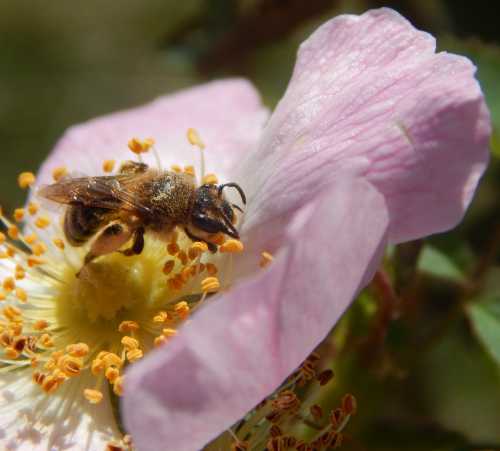 Wild roses provide a rich source of pollen to solitary bees of various species. This painted mining bee is gathering pollen on long hairs on its legs, rather than in 'baskets' seen on honey and bumble bees.
Wild roses provide a rich source of pollen to solitary bees of various species. This painted mining bee is gathering pollen on long hairs on its legs, rather than in 'baskets' seen on honey and bumble bees.Bees on wild roses:
Wild roses can be climbers, or stand alone shrubs as with their cultivated relatives. Wild roses are sometimes called ‘dog roses’ but this name actually refers to the climbing wild rose, Rosa canina.
However, the term ‘wild rose’ also includes other roses, for example Rosa acicularis, Rosa woodsii, Rosa arkansana, Rosa virginiana.
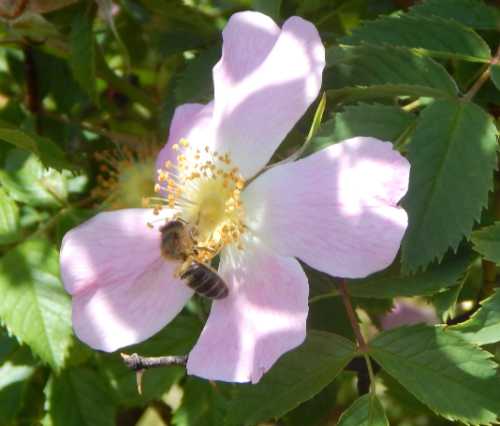 Honey bee foraging on pale pink rose.
The anthers inside the flowers are very visable, and offer bees plenty of pollen.
Honey bee foraging on pale pink rose.
The anthers inside the flowers are very visable, and offer bees plenty of pollen.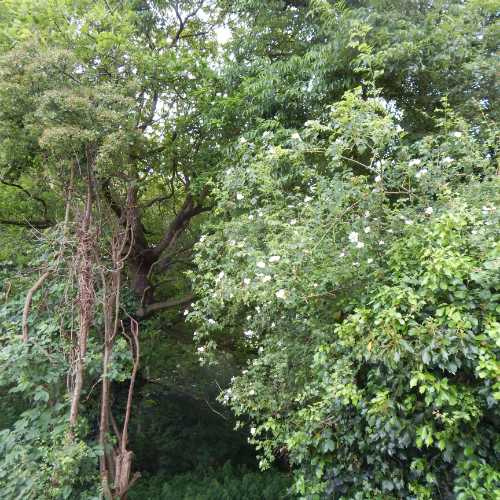 Above - wild dog rose, a climber.
Above - wild dog rose, a climber.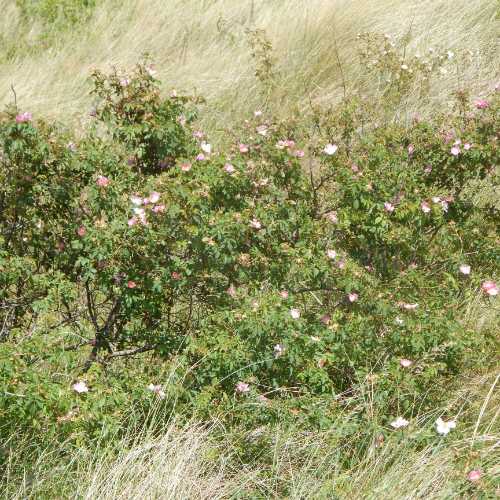 Wild roses growing among the grasses on the sand dune landscape.
Wild roses growing among the grasses on the sand dune landscape.Bees on Rosa rugosa
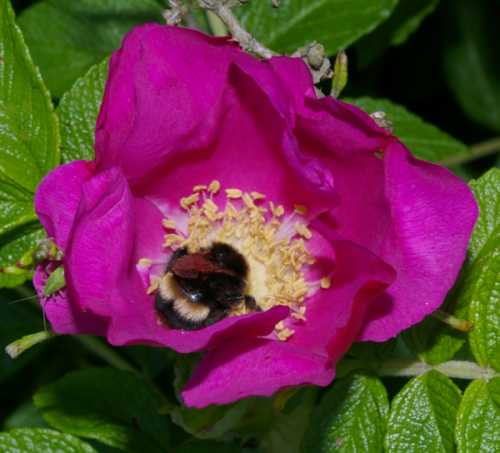 Broken belted bumble bee - Bombus soroeensis foraging on Rosa rugosa.
Broken belted bumble bee - Bombus soroeensis foraging on Rosa rugosa.Rosa rugosa is one of my favourite flowering garden shrubs for bees. I love both the pink and white varieties available. It's a wonderfully decorative bush, and it has a fairly long flowering period.
The fragrance from the flowers is absolutely divine, and even the rose hips are a wonderful sight: they look like large, glossy red balls that have been slightly squashed! The prickly stems make them an excellent protective boundary shrub too.
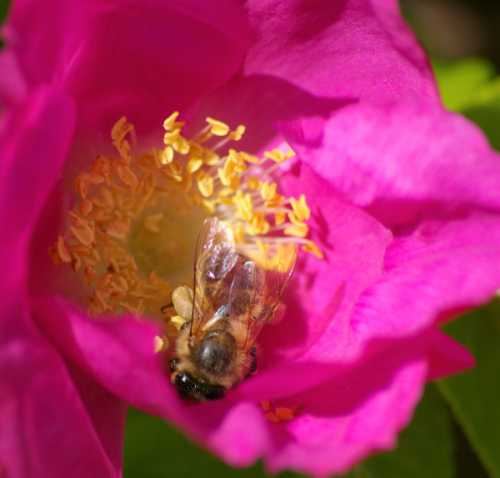 Honey bee - Apis mellifera foraging on Rosa rugosa.
Honey bee - Apis mellifera foraging on Rosa rugosa.Some of these pictures were taken a little way down the road from where I live. These rose bushes form part of the boundary hedge, and the owner has used both pink and white varieties. Other types of shrub are mixed in too, such as hawthorn, privet and sloes.
Having had a number of chats with the owner of the garden, it's very clear he plans the space with wildlife in mind. His garden attracts a variety of bee species, small voles and plenty of birds.
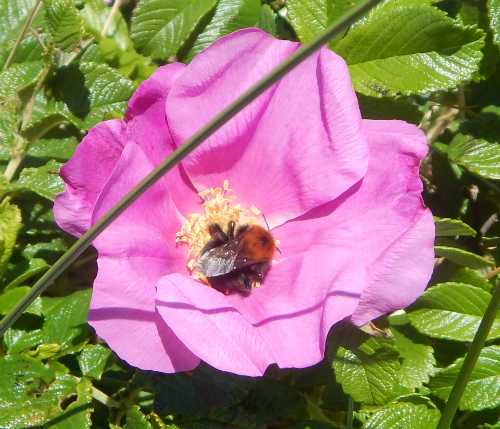 Tree bumble bee - Bombus hypnorum foraging on fragrant Rosa rugosa in a garden boundary hedge.
Tree bumble bee - Bombus hypnorum foraging on fragrant Rosa rugosa in a garden boundary hedge.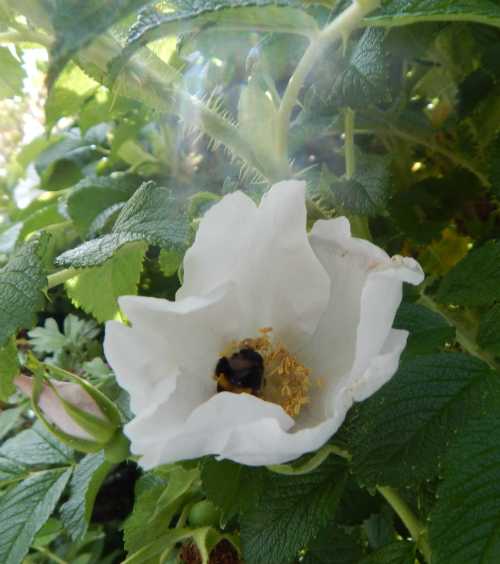 White Rosa rugosa are also popular with bees.
White Rosa rugosa are also popular with bees.Do other pollinators like roses?
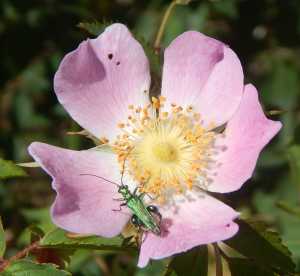 What a handsome chap! A thick-legged flower beetle - Oedemera nobilis - visiting a wild rose flower.
What a handsome chap! A thick-legged flower beetle - Oedemera nobilis - visiting a wild rose flower.You'll most probably see a variety of flies - including hover flies, inside the flower heads of roses, as well as a range of beetles of various sizes.
One of my favourites is this handsome fella - the thick- legged flower beetle. This lovely pollinating beetle is notable for its beautiful metallic green body.
If you found this page helpful or interesting, I'd really be grateful if you would share it with others - if not this page, perhaps another, such as Gardening For Bees.
Thank you so much :) .